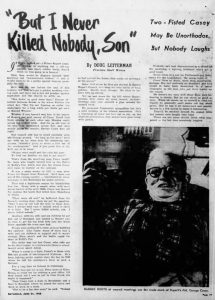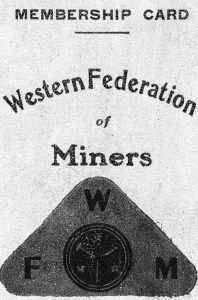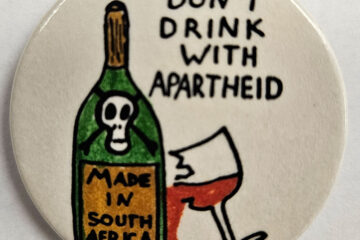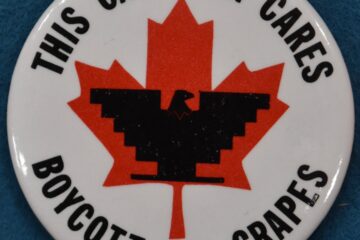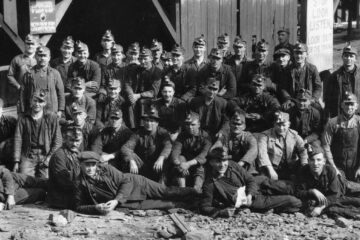George Casey: Prince Rupert’s Labour Watchdog
Throughout his 50 years in Prince Rupert, George Bernard Casey was a steadfast representative of the working class and its union organizations.
Born in Ontario in 1876, George Casey headed to the United States as a young man where he spent time as a “hobo”, ending up in jail on at least one occasion.
Moving between California, Montana and Idaho he became a miner during the period the Western Federation of Miners (WFM) was forming. The WFM in the United States gained a reputation as a militant and often undisciplined organization. Labour disputes were conducted without a legal framework and sometimes involved guns, bombs, strikebreakers, arrests and martial law.
In 1905, the WFM’s leadership was charged with the murder of the former Governor of Idaho.
The union men were defended in court by criminal lawyer Clarence Darrow, a legendary figure in American labour history whose long career of defending the weak against the strong has been eulogized in plays, movies and books. Under Darrow’s defence, WFM President Charles Moyer and Secretary ‘Big’ Bill Haywood were acquitted.
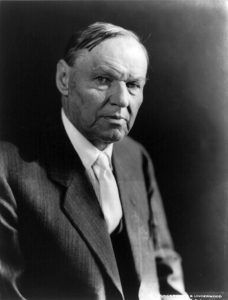
George Casey named his son “Darrow” after renowned attorney Clarence Darrow, who defended the WFM leadership in 1906 against murder charges in Idaho.
George Casey named one of his sons “Darrow” after the renowned lawyer. It was an honour that was passed down through generations of Casey’s.
Decades later George Casey claimed that he had personally been implicated in the murder, but there is no record of him being charged. Claiming innocence, a belligerent Casey told a newspaper reporter in 1952, “sure I always took care o’ myself when it came to a fight. But I never killed nobody, son. I never killed nobody”.
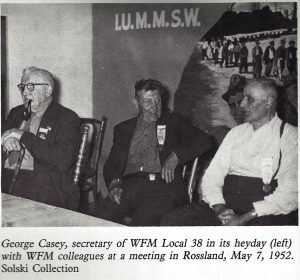 After the acquittal of Haywood and Moyer in 1906, George Casey returned to Canada at Rossland in BC’s West Kootenays, and soon became secretary of the Western Federation of Miners Local 38, a job he said he won because he had “talked so bad against the bosses”. He was secretary of Local 38 when the Rossland Miners Union Hall was established. The Hall remains an icon of the labour movement in the community. By 1910 Casey had been “blackballed in almost every mining camp in BC” for union activity and headed north to Prince Rupert.
After the acquittal of Haywood and Moyer in 1906, George Casey returned to Canada at Rossland in BC’s West Kootenays, and soon became secretary of the Western Federation of Miners Local 38, a job he said he won because he had “talked so bad against the bosses”. He was secretary of Local 38 when the Rossland Miners Union Hall was established. The Hall remains an icon of the labour movement in the community. By 1910 Casey had been “blackballed in almost every mining camp in BC” for union activity and headed north to Prince Rupert.
Casey had many occupations in Prince Rupert. At various times he was a miner at Anyox, a prospector, a fish plant worker, civic employee and a delivery business owner. Throughout his 50 years in Prince Rupert, Casey remained a steadfast representative of the working class and its union organizations. He also maintained his connection to the West Kootenays.
In 1914 George Casey was elected to Prince Rupert City Council and served non-consecutive terms for 26 years. He ran unsuccessfully for the Socialist Party of Canada and the Federated Labor Party in provincial elections in 1909, 1912 and 1920 for Atlin and Rossland constituencies.
Casey’s stature in the community propelled him to larger roles in the labour movement.
Present during a major confrontation between police and workers in Prince Rupert in 1911 referred to as “The Battle of Kelly’s Cut”, Casey took the case of the 50 arrested men to the BC Federation of Labor Convention in 1912 in Victoria and then to the federal government. He claimed all were “liberated” due to his efforts. A poem written by Casey about the incident remains a timeless tribute to working people.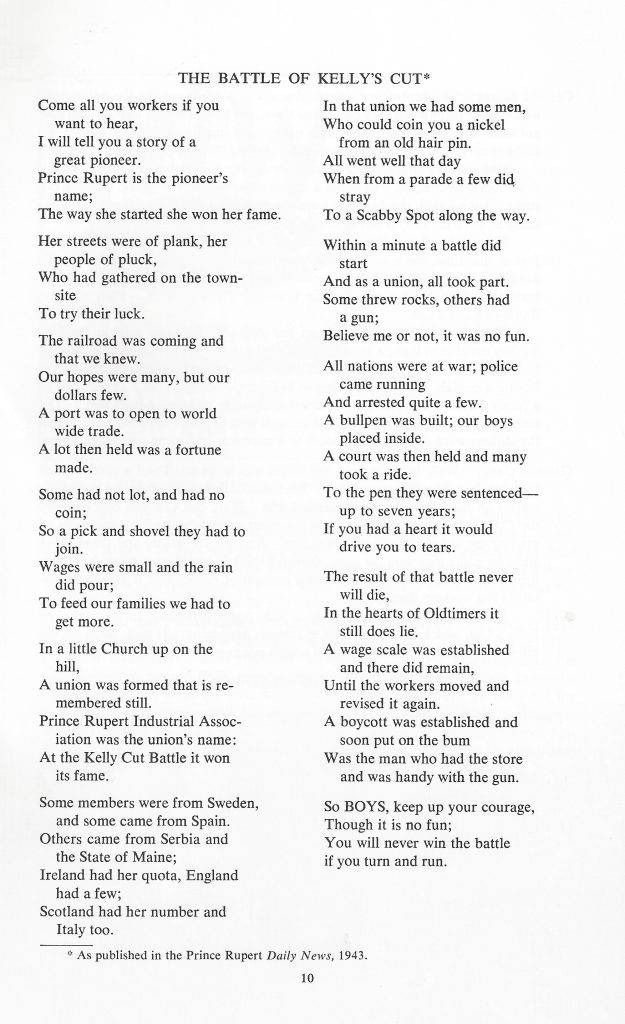 George Casey was a Vice President of the BC Federation of Labour in 1918 and an organizer for the One Big Union in 1919. He acted as unofficial mediator in Prince Rupert labour disputes, most notably the 1919 Prince Rupert General Strike which took place in sympathy with fellow workers during the Winnipeg General Strike.
George Casey was a Vice President of the BC Federation of Labour in 1918 and an organizer for the One Big Union in 1919. He acted as unofficial mediator in Prince Rupert labour disputes, most notably the 1919 Prince Rupert General Strike which took place in sympathy with fellow workers during the Winnipeg General Strike.
Casey described himself politically as having “communist sympathies” yet was an active member of the Liberal party.
The City of Prince Rupert feted Casey with a civic dinner in 1956. He considered himself the “watchdog” of Prince Rupert Council. “As long as I’m here, nobody’s going to make a fool out of the workingman,” he declared. George Casey Park in Prince Rupert is named in his honour.
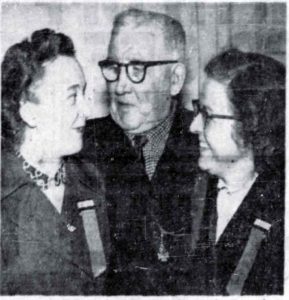
George Casey at the Mine, Mill and Smelter Workers’ Convention in 1952, with Marie Walsh and Margaret Fitzpatrick, members of the Union’s ladies’ auxiliary in Rossland. The Province, 31 Jan 1952.
At his funeral in 1962, the leadership of the International Mine, Mill and Smelter Workers Union were pallbearers and read the union burial ritual. Casey had been a lifetime member of the union since 1953.
Sources:
